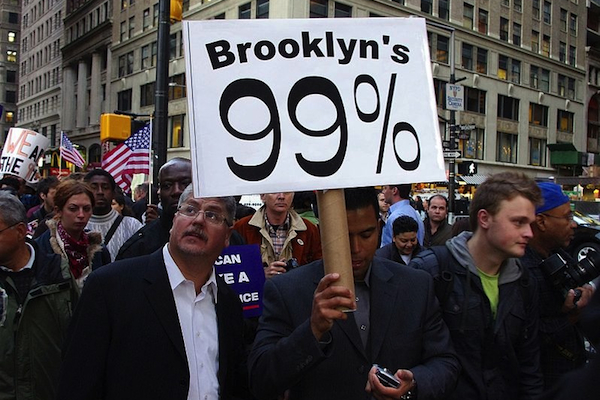
Photo by: David Shankbone
Statistics on income inequality fueled the Occupy movement. But they might not be the best indicators of whether Bill de Blasio makes good on his campaign theme.
If Bill de Blasio had built his mayoral campaign around a promise to reduce crime, we’d simply tally up the number of murders, rapes, assaults and other offenses in a year or two to see whether he was succeeding or not. If he’d campaigned on a vow to improve schools, we could (with caution) look at test scores or graduation rates.
As it turns out, de Blasio chose a bigger, more amorphous target: inequality. Unlike former Mayor Bloomberg, who committed to reducing homelessness by two-thirds and to substantially reducing poverty (he failed on both counts), de Blasio never made a specific promise of how much he would reduce inequality. But he did vow to reduce it, and to hold him accountable, we need to come up with a consistent way to measure progress against inequality.
So I asked a group of policy experts—some of whom are involved in the transition and couldn’t be quoted by name—to suggest how to track de Blasio’s impact.
Read what they said here.








